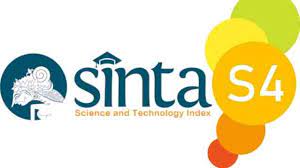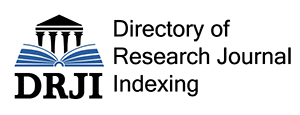The Effect of the Teams Games Tournament (TGT) Model and Motivation on Understanding Pancasila Philosophy
DOI:
https://doi.org/10.51276/edu.v5i1.721Keywords:
Pancasila Philosophy , Learning Motivation , PPKN Study Program , TGT ModelAbstract
The effect of the Teams Games Tournament learning model and motivation on understanding the ideology of Pancasila in the Civics Study Program was studied using a non-equivalent group pretest-posttest research design. The PPKN study program, totalling 30 people, was the subject of this research. Questionnaires and tests are used to gather information about research findings. The research investigation was carried out using the independent sample t-test technique, with a significance level 0.05. The study's findings show that the total count is 5.509. Here, the t value exceeds the 2.048 t table value. These findings suggest that cooperative learning models of the TGT kind effect student learning motivation. Based on the Independent Samples Test on "Assumption of Equal variances," the Sig is known. (2-tailed) of 0.000 < 0.05 to be the basis for decision-making in the Independent Sample T-Test. As a result, there is a relatively significant difference in learning outcomes between students taught using the conventional learning model (control class) and students taught using the TGT learning model. The Pancasila ideology is different in applying the Teams Games Tournament learning model to the standard learning model. Second, the Teams Games Tournament learning style can increase learning motivation because of active participation.
Downloads
Metrics
References
Ajeng, S. (2021). The Efforts to Improve the Ability to Speak English through the Game" Snake and Ladder" in Grade VII-A Students at SMPN 3 Ngimbang. Journal of Diversity in Learning (JDIL), 1(2), 55-61.
Anderson, L. W., & Krathwohl, D. R. (2001). A Taxonomy for Learning, Teaching, and Assessing : a Revision of Bloom’s Taxonomy of Educational Objectives. England: Longman.
Arends, R. I. (2012). Learning to Teach. USA: McGraw-Hill Education
Aydın, G., & Michou, A. (2020). Self-determined Motivation and Academic Buoyancy as Predictors of Achievement in Normative Settings. British Journal of Educational Psychology, 90(4), 964-980. https://doi.org/10.1111/bjep.12338
Bandura, A. (1982). Self-efficacy Mechanism in Human Agency. American Psychologist, 37(2), 122–147. https://doi.org/10.1037/0003-066X.37.2.122
Barnes, J. (2020). Promoting Student Agency in Writing: Reading Teacher, 73(6), 789–795. https://doi.org/10.1002/TRTR.1899
Bonwell, C. C., & Eison, J. A. (1991). Active Learning: Creating Excitement In The Classroom. 1991 ASHE-ERIC Higher Education Reports. ERIC Clearinghouse on Higher Education, The George Washington University, One Dupont Circle, Suite 630, Washington, DC 20036-1183.
Borowski, P. F. (2021). Innovation Strategy on the Example of Companies Using Bamboo. Journal of Innovation and Entrepreneurship, 10(1), 1-17. https://doi.org/10.1186/s13731-020-00144-2
Branson, M. S. (1998). The Role of Civic Education: A Forthcoming Education Policy Task Force Position Paper from the Communitarian Network. Center for Civic Education.
Brindley, J. E., Walti, C., & Blaschke, L. M. (2009). Creating effective collaborative learning groups in an online environment. International Review of Research in Open and Distance Learning, 10(3), 1–18. https://doi.org/10.19173/irrodl.v10i3.675
Broadbent, J., & Fuller-Tyszkiewicz, M. (2018). Profiles in Self-Regulated Learning and Their Correlates for Online and Blended Learning Students. Educational Technology Research and Development, 66(6), 1435–1455. https://doi.org/10.1007/s11423-018-9595-9
Budimansyah, D. (2008). Peningkatan Mutu Pendidikan Melalui Penguatan Partisipasi Masyarakat. Jurnal Educationist, 2(1), 56-63.
Cacciamani, S., Perrucci, V., & Khanlari, A. (2018). Conversational Functions for Knowledge Building Communities: A Coding Scheme for Online Interactions. Educational Technology Research and Development, 66(6), 1529–1546. https://doi.org/10.1007/s11423-018-9621-y
Cheon, S. H., Reeve, J., & Vansteenkiste, M. (2020). When Teachers Learn How to Provide Classroom Structure in an Autonomy-Supportive Way: Benefits to Teachers and Their Students. Teaching and Teacher Education. https://doi.org/10.1016/J.TATE.2019.103004
Cogan, J.J. (1999). Developing the Civic Society: The Role of Civic Education. Bandung: CICED.
Daniela, P. (2015). The Relationship Between Self-Regulation, Motivation and Performance at Secondary School Students. Procedia - Social and Behavioral Sciences, 191, 2549–2553. https://doi.org/10.1016/J.SBSPRO.2015.04.410
Darwin, S. (2011). Learning in Activity: Exploring the Methodological Potential of Action Research in Activity Theorizing of Social Practice. Educational Action Research, 19(2), 215–229. https://doi.org/10.1080/09650792.2011.569230
Degeng, I. N. S. (2013). Ilmu Pembelajaran: Klarifikasi Variabel untuk Pengembangan Teori dan Penelitian. Bandung: Aras media.
Diaconu-Gherasim, L. R., Măirean, C., & Brumariu, L. E. (2019). Quality of Teachers’ and Peers’ Behaviors and Achievement Goals: The Mediating Role of Self-Efficacy. Learning and Individual Differences, 73, 147–156. https://doi.org/10.1016/j.lindif.2019.06.001
Donelan, H., & Kear, K. (2018). Creating and Collaborating: Students’ and Tutors’ Perceptions of an Online Group Project. International Review of Research in Open and Distance Learning, 19(2), 37–54. https://doi.org/10.19173/irrodl.v19i2.3124
Elliot, A. J., & Moller, A. C. (2003). Performance-Approach Goals: Good or Bad Forms of Regulation? International Journal of Educational Research, 39(4–5), 339–356. https://doi.org/10.1016/j.ijer.2004.06.003
Ellis, N. J., Alonzo, D., & Nguyen, H. T. M. (2020). Elements of a Quality Pre-Service Teacher Mentor: A Literature Review. Teaching and Teacher Education, 92. https://doi.org/10.1016/J.TATE.2020.103072
Eryadini, N. (2021). The Diversity of Students’ Emotional Intelligence and its Effect on Student Activities in the Learning Process . Journal of Diversity in Learning (JDIL), 1(3), 104 - 111
Fidalgo, P., Thormann, J., Kulyk, O., & Lencastre, J. A. (2020). Students’ Perceptions on Distance Education: A Multinational Study. International Journal of Educational Technology in Higher Education, 17(1), 18. https://doi.org/10.1186/s41239-020-00194-2
Grinfelde, I., & Veliverronena, L. (2018). The Limits of Creative Approach: Conducting an Orchestra of Emotions in the Darkness. Creativity Studies, 11(2), 362–376. https://doi.org/10.3846/cs.2018.7183
Hulleman, C. S., & Cordray, D. S. (2009). Methodological Studies: Moving from the Lab to the Field: The Role of Fidelity and Achieved Relative Intervention Strength. Journal of Research on Educational Effectiveness, 2(1), 87–110. https://doi.org/10.1080/19345740802539325
Jenkins, E. M., Zaher, Z., Tikkanen, S. A., & Ford, J. L. (2019). Creative identity (re)Construction, creative community building, and creative resistance: A qualitative analysis of queer ingroup members’ tweets after the Orlando Shooting. Computers in Human Behavior, 101, 14–21. https://doi.org/10.1016/j.chb.2019.07.004
Lindsey, D. (1999). Faith in Our Children. Children and Youth Services Review, 21, 1–6. https://doi.org/10.1016/S0190-7409(99)00002-X
Liu, C. C., Cheng, Y. B., & Huang, C. W. (2011). The Effect of Simulation Games on the Learning of Computational Problem Solving. Computers and Education, 57(3), 1907–1918. https://doi.org/10.1016/j.compedu.2011.04.002
Markova, M., Modliński, A., & Pinto, L. M. (2020). Creative or Analitical Way for Career Development? Relationship Marketing in the Field of International Business Education. Creativity Studies, 13(1), 99-113. https://doi.org/10.3846/cs.2020.6625
Muhaimin. (1996). Teaching and Learning Strategies. Surabaya: Citra Media.
Nemiro, J. E. (2021). Developing Collaborative Behaviours in Elementary School Students: A Comparison of Robotics Versus Maths Teams. Educational Studies, 47(5), 521–537. https://doi.org/10.1080/03055698.2020.1716209
Neroni, J., Meijs, C., Gijselaers, H. J. M., Kirschner, P. A., & de Groot, R. H. M. (2019). Learning Strategies and Academic Performance in Distance Education. Learning and Individual Differences, 73, 1–7. https://doi.org/10.1016/j.lindif.2019.04.007
Nurdiana, R., & Suryanto, H. (2021). Increase Creativity and Activity in the Creative Study of Problem Solving-Based Human Resource Management. Journal of Diversity in Learning (JDIL), 1(4), 151 – 157.
Ramadhani, R., Umam, R., Abdurrahman, A., & Syazali, M. (2019). The Effect of Flipped-Problem Based Learning Model Integrated With LMS-Google Classroom for Senior High School Students. Journal for the Education of Gifted Young Scientists, 7(2), 137–158. https://doi.org/10.17478/jegys.548350
Shih, J. L., Shih, B. J., Shih, C. C., Su, H. Y., & Chuang, C. W. (2010). The Effect of Collaboration Styles to Children’s Cognitive Performance in Digital Problem-Solving Game “William Adventure”: A Comparative Case Study. Computers and Education, 55(3), 982–993. https://doi.org/10.1016/j.compedu.2010.04.009
Soto Gómez, E., Serván Núñez, M. J., Trapero, N. P., & Pérez Gómez, Á. I. (2019). Action Research through Lesson Study for the Reconstruction of Teachers’ Practical Knowledge. A Review of Research at Málaga University (Spain). Educational Action Research. https://doi.org/10.1080/09650792.2019.1610020
Stevanović, A., Božić, R., & Radović, S. (2021). Higher Education Students’ Experiences and Opinion about Distance Learning During the Covid-19 Pandemic. Journal of Computer Assisted Learning, 37(6), 1682–1693. https://doi.org/10.1111/JCAL.12613
Sukarno. (1965). Under the Flag of the Revolution, Volume II. Jakarta: Publishing Committee Under the Flag of the Revolution.
Supriyanto. (2020). The Effect of Realistic Mathematics Education Learning Models on the Learning Outcomes of Exponential Functions and Logarithmic Functions. Journal of Diversity in Learning (JDIL), 1(1), 13-28.
Suryanto, H. (2020). Hubungan interaksi sosial antar siswa dengan kreativitas belajar dalam memahami pelajaran IPS. Journal of Creative Attitudes Culture, 1(1), 19–33.
Suryanto, H., Degeng, I. N. S., Djatmika, E. T., & Kuswandi, D. (2021). The Effect of Creative Problem Solving with the Intervention Social Skills on the Performance of Creative Tasks. Creativity Studies, 14(2), 323–335. https://doi.org/10.3846/CS.2021.12364
Suryanto, H., Degeng, N. S., Djatmika, E. T., & Kuswandi, D. (2020). The Effect of Creative Problem Solving Learning Strategy on Conceptual and Procedural Understanding Moderated by Social Skills. In International Journal of Innovation, Creativity and Change, 13(10), 1158-1175
Suryanto, H., Warring, S., Kartikowati, R. S., Rorimpandey, W. H., & Gunawan, W. (2021). Study Creativity with Diverse Social Skills to Support the Learning Process in Future Education. JDIL Journal of Diversity in Learning, 1(2), 85–89. https://doi.org/10.1300/J104v03n01_03
Sutarum, Zaman, A. Q., & Machsunah, Y. C. M. (2021). The Effect Community of Inquiry Assisted by Social Media on Problem-Solving Ability in Education Policy Courses. Journal of Diversity in Learning (JDIL), 1(4), 143 - 150.
Tadesse, T., Gillies, R. M., & Manathunga, C. (2020). Shifting the Instructional Paradigm in Higher Education Classrooms in Ethiopia: What Happens When We Use Cooperative Learning Pedagogies More Seriously? International Journal of Educational Research, 99. https://doi.org/10.1016/j.ijer.2019.101509
Tyng, C. M., Amin, H. U., Saad, M. N. M., & Malik, A. S. (2017). The Effects of Emotion on Learning and Memory. Frontiers in Psychology, 8, 1454. https://doi.org/10.3389/fpsyg.2017.01454
Ukkonen-Mikkola, T., & Varpanen, J. (2020). Integrated Initial and Continuing Training as a Way of Developing the Professional Agency of Teachers and Student Teachers. Teaching and Teacher Education, 96. https://doi.org/10.1016/J.TATE.2020.103189
Wang, K., & Nickerson, J. V. (2017). A Literature Review on Individual Creativity Support Systems. Computers in Human Behavior, 74, 139–151. https://doi.org/10.1016/j.chb.2017.04.035
Webb, N. M., Franke, M. L., Ing, M., Turrou, A. C., Johnson, N. C., & Zimmerman, J. (2019). Teacher Practices that Promote Productive Dialogue and Learning in Mathematics Classrooms. International Journal of Educational Research, 97, 176-186. https://doi.org/10.1016/j.ijer.2017.07.009
Wirthwein, L., Bergold, S., Preckel, F., & Steinmayr, R. (2019). Personality and School Functioning of Intellectually Gifted and Nongifted Adolescents: Self-Perceptions and Parents’ Assessments. Learning and Individual Differences, 73, 16–29. https://doi.org/10.1016/j.lindif.2019.04.003
Xue, S., & Churchill, D. (2019). A Review of Empirical Studies of Affordances and Development of a Framework for Educational Adoption of Mobile Social Media. Educational Technology Research and Development, 1231-1257. https://doi.org/10.1007/s11423-019-09679-y
Yang, Y. T. C. (2015). Virtual CEOs: A Blended Approach to Digital Gaming for Enhancing Higher Order Thinking and Academic Achievement Among Vocational High School Students. Computers and Education, 81, 281–295. https://doi.org/10.1016/j.compedu.2014.10.004
Zacharia, Z. C., Xenofontos, N. A., & Manoli, C. C. (2011). The Effect of Two Different Cooperative Approaches on Students’ Learning and Practices Within the Context of a Webquest Science Investigation. Educational Technology Research and Development, 59(3), 399–424. https://doi.org/10.1007/s11423-010-9181-2
Zumbrunn, S., Broda, M., Varier, D., & Conklin, S. (2019). Examining the Multidimensional Role of Self-Efficacy for Writing on Student Writing Self-Regulation and Grades in Elementary and High School. British Journal of Educational Psychology, 90(3), 580-603. https://doi.org/10.1111/bjep.12315
Downloads
Published
How to Cite
Issue
Section
License
Copyright (c) 2024 Hadi Suryanto, Abd Ghofur, Akhmad Qomaru Zaman

This work is licensed under a Creative Commons Attribution-NonCommercial-NoDerivatives 4.0 International License.












































